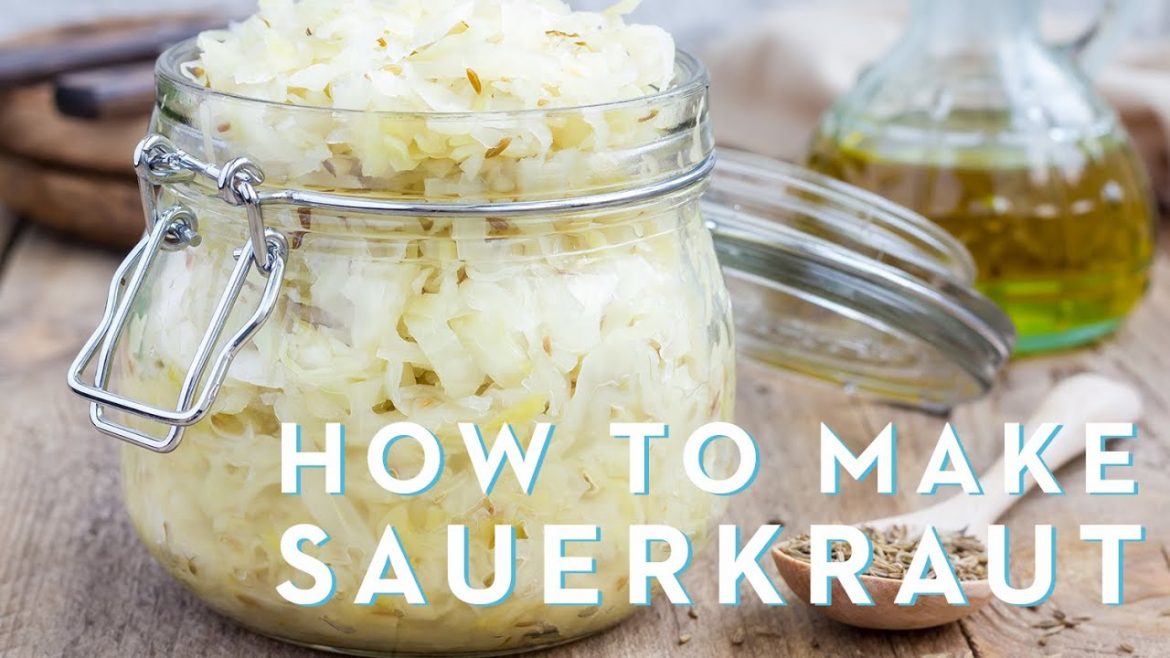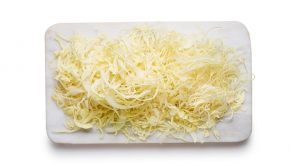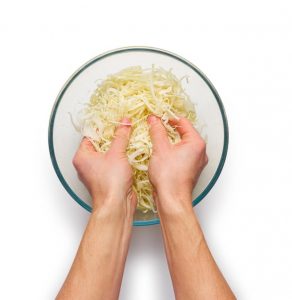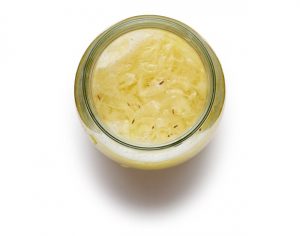All you need to know to make the classic german fermented cabbage at home.This sauerkraut recipe, however, is nothing like that. It’s homemade from scratch with simple ingredients it’s super easy to master the technique Shall we?
NOTE : korean kimchi may be grabbing all the good publicity at the moment, but German sauerkraut, or choucroute as it’s known across the border in the French Alsace, is another fermented cabbage product that’s worthy of your attention. Like kimchi, it should ideally be consumed while still live, rather than pasteurised, which is much easier if you make it yourself.
How to make classic homemade sauerkraut !
All you need to know to make the classic german fermented cabbage at home.This sauerkraut recipe, however, is nothing like that. It’s homemade from scratch with simple ingredients it’s super easy to master the technique Shall we?Ingrédients
- 1 medium white cabbage (about 1kg) in my case I used the white cabbage that does not mean that the other types of cabbage will not be of the same taste there is the same possibility of mixing them all like (red cabbage, green, or savoy and kale a bit limp for the purposeI think the sweeter red version is particularly good in a kraut flavoured with juniper berries.)
- 2 tbsp fine salt plus more to taste
- 2 tbsp Vinegar
- 1 tsp juniper berries or caraway seeds
- 2 Tbsp fresh ginger optional
Instructions
Notes
What Can Go Wrong?
Not much! You may see bubbles, foam, or white scum on the surface of the sauerkraut, but these are all signs of normal, healthy fermentation. The white scum can be skimmed off as you see it or before refrigerating the sauerkraut. If you get a very active fermentation or if your mason jar is very full, the brine can sometimes bubble up over the top of the jar. This is part of the reason why I recommend using a larger mason jar than is really necessary to hold the cabbage. If you do get a bubble-up, it’s nothing to worry about — just place a plate below the jar to catch the drips and make sure the cabbage continues to be covered by the brine.It is possible you might find mold growing on the surface of the sauerkraut, but don’t panic! Mold typically forms only when the cabbage isn’t fully submerged or if it’s too hot in your kitchen. The sauerkraut is still fine (it’s still preserved by the lactic acid) — you can scoop off the mold and proceed with fermentation. This said, it’s still important to use your best judgement when fermenting. If something smells or tastes moldy or unappetizing, trust your senses and toss the batch.
How to make classic homemade sauerkraut !
previous post




